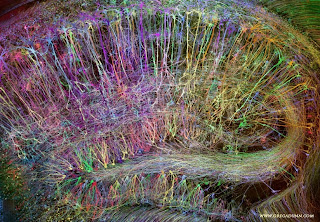Science fiction, depicting people living out their lives in space, took over mainstream entertainment as the space race began to pick up. These films, comics, and books took advantage of the relatively limited public knowledge of space and consequently infinite possibilities to dazzle people with wondrous fictitious technology and extravagant ideas about the future.
Although not explicitly stated in this week's course material, this fascination with space and intersect between space and art has is nothing new and existed far before space exploration was even an idea. One of the more ancient relationship between space and art can be found in early human fascination with the stars and naming of constellations. Simplistic images formed by connecting stars with lines have long entertained people and served as inspiration for complex stories and historical and religious lessons.
Although human fascination with space is nothing new and has existed arguably since the beginning of the human experience, there is still much to be learned about it. Space missions are still to this day risky and costly ventures. Numerous failed space launches including the Apollo and Challenger missions have devastated the world, but the importance of continued efforts and curiosity cannot be overstated. The possibility of commercial space travel and the endless economic benefits from not only further exploration, but exploitation of extra terrestrial resources prove that the sphere of outer space is still an expanding and exciting field with enormous potential to not only quench a thirst for knowledge, but better the human experience!
Images:
Fenlon, Wesley. "What Would a Real Space Battle Look Like?" Tested. 26 Nov. 2012. Web. 31 May 2015. <http%3A%2F%2Fwww.tested.com%2Fscience%2Fweird%2F451609-what-will-space-battles-really-look%2F>.
"The 88 Star Constellations of the Night Sky." Go Astronomy. Web. 31 May 2015. <http://www.go-astronomy.com/constellations.htm>.
Silva, Jason. "At TED Active 2011 SCIENCE, ART = WONDER." Huffington Post. 8 Mar. 2011. Web. 31 May 2015. <http%3A%2F%2Fwww.huffingtonpost.com%2Fjason-silva%2Fat-ted-active-2011-scienc_b_832677.html>.
Sources:
"Business Insider Finds Your Futurist Sci-Fi Tech Dreams Hilarious, You Silly American People." Wonkette. Web. 31 May 2015. http://wonkette.com/547059/business-insider-finds-your-futurist-sci-fi-tech-dreams-hilarious-you-silly-american-people
Franklin, H. Bruce. "Science Fiction, The Early History." Web. 31 May 2015. http://andromeda.rutgers.edu/~hbf/sfhist.html
Dolan, Chris. "Alphabetical Listing of Constellations." Web. 31 May 2015. http://www.astro.wisc.edu/~dolan/constellations/constellation_list.html
"Stories From the Stars: Origins of the Constellations." Stargazers Astronomy. Web. 31 May 2015. http://www.stargazers.iinet.net.au/constellorigins.htm
Heidegger, Martin. "Art and Space." Web. 31 May 2015. http://roundtable.kein.org/sites/newtable.kein.org/files/Art%20and%20Space.pdf





